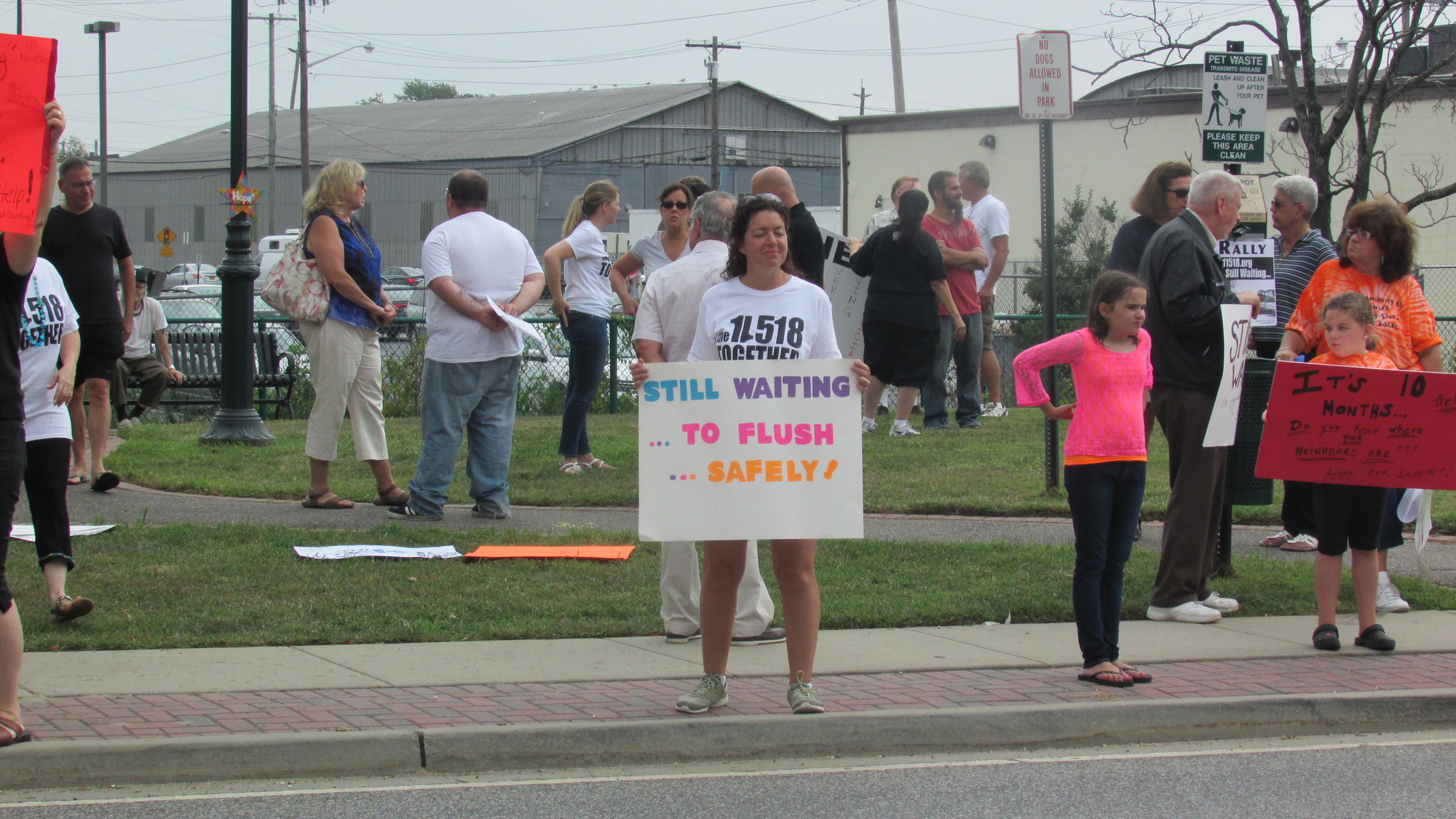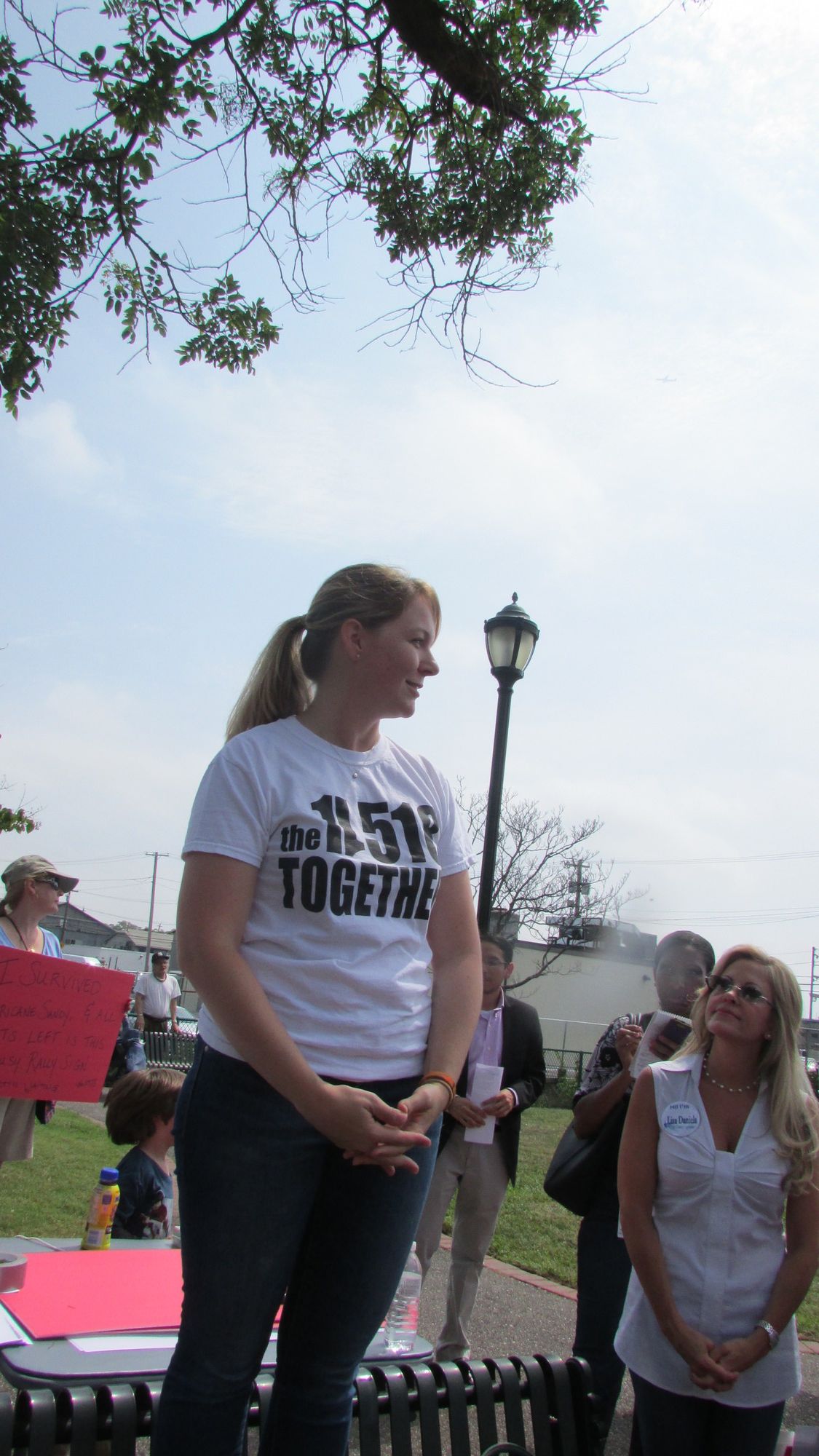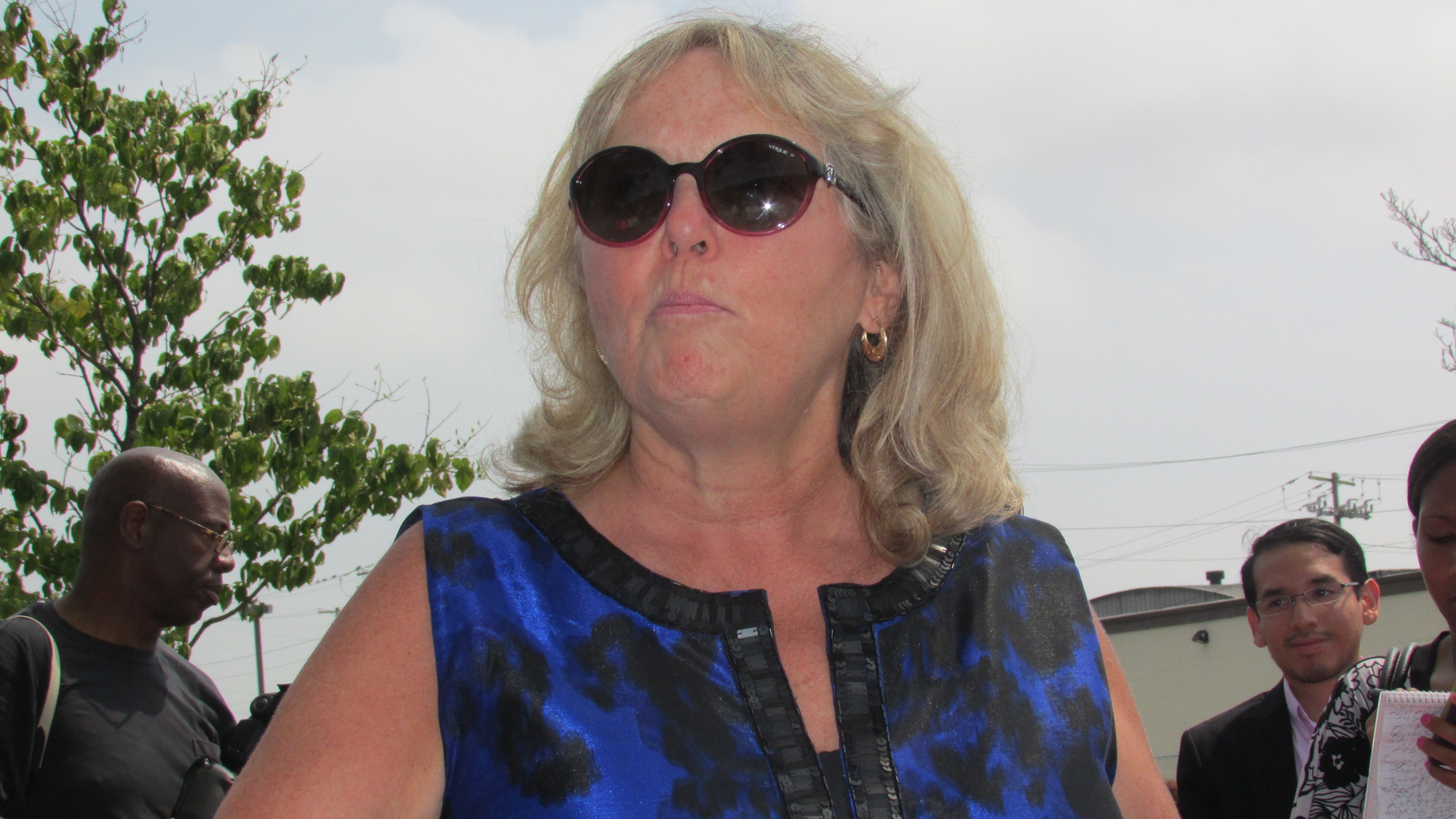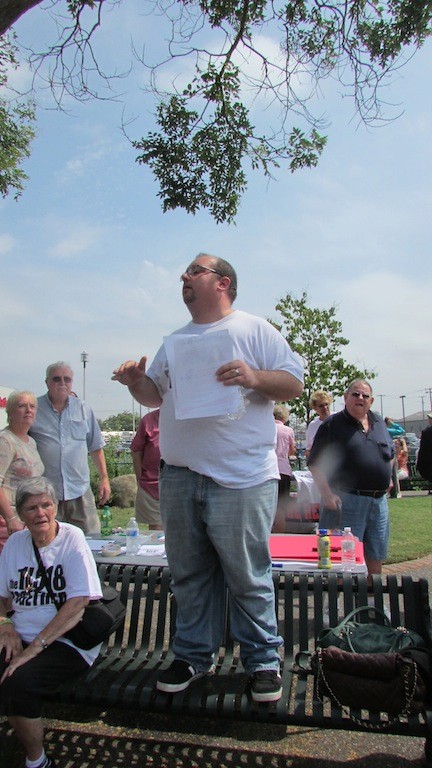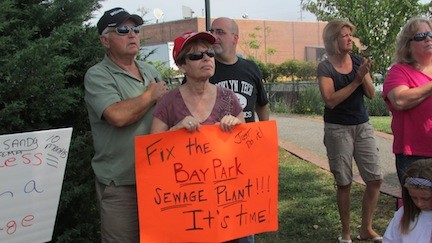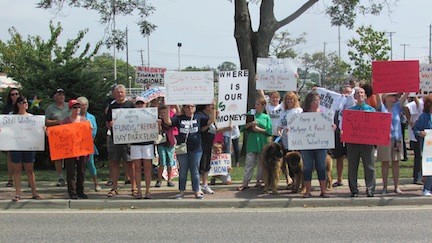Sandy: Ten months and counting
East Rockaway organization hosts Post-Sandy rally
Bay Park resident Frances Healy, 89, stood with her son, William, and other Hurricane Sandy victims and their supporters at last Saturday’s “Still Waiting” rally on Ocean Avenue in East Rockaway. Their aim was to focus attention on the challenges faced by residents who are still not back in their homes 10 months after the storm. Healy agreed to answer some questions, but, she said, “I may cry.”
“I lost everything on the first floor,” said Healy, a widow who was living alone in a small cottage on Malecon Street, the last block in East Rockaway before Bay Park, when Sandy hit. “The water was four feet high … I lost appliances, furniture, my television, a sewing machine … everything.”
Her son said he had scanned most of the photos in his mother’s albums, so those keepsakes were not lost. “But everything else was,” he added.
Healy is living with her daughter and son-in-law in Massapequa until she can move back home. Asked what still needs to be done to make her cottage livable, she replied, “Everything! My insurance company is going in circles … and we’re waiting for FEMA” — the Federal Emergency Management Agency.
The gathering, which attracted more than 100 people, was the brainstorm of a local grass-roots organization called the11518, a nonprofit formed in April. The rally was held to bring attention to the hundreds of people in East Rockaway and Bay Park who are still waiting to move back into their homes or waiting for repairs to be completed.
“Almost every other house in Bay Park is either empty or has the residents living on the second floor,” said rally organizer Dan Caracciolo, president and co-founder of The11518. “We’re here today to help people in terms of information, sharing and receiving resources. This is going on not just here, but in other communities. Those people are here, standing with us today.”
Caracciolo pointed out that the Bay Park Sewage Treatment Plant, which was inundated by a nine-foot tidal surge during the storm and rendered virtually inoperable, is still dependent on generators 10 months after the storm. “All that sewage, going into our waterways … it has to stop,” he said.

 39.0°,
Fair
39.0°,
Fair 